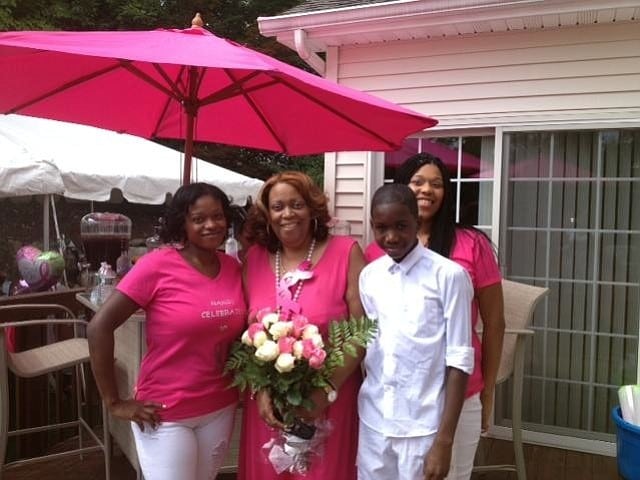Fourteen years after diagnosis, this breast cancer survivor is going strong
An old tradition helped Nancy Robinson find a suspicious lump in her breast. While helping a good friend raise funds for a cancer walk, Robinson did as her grandmother and mother before her had done: She tucked money into her bra for safekeeping.
Her hand brushed against a lump. “I was, like, ‘Whoa! What was that?'” But she was busy, and like the money, she tucked the finding away. She didn’t think about it again until the day of the cancer walk, when she stopped at several vendor tents where health-care workers were showing how to do a breast self-exam.
“I knew immediately,” she says. “I told my husband that night.” Her doctor sent her to a surgeon for a needle biopsy. She was told her results were fine.
A chance encounter with her doctor several months later rocked Robinson’s world. “She asked me how treatment was going. She said, ‘You haven’t lost your hair or anything!’ She thought I was being taken care of by the surgeon she’d recommended,” Robinson says. A mix-up in the surgeon’s office had given her someone else’s biopsy results; it turned out that her lump was 99 percent malignant. And with that she joined the legion of women in this country with breast cancer.
White women older than 40 are more likely to be diagnosed with breast cancer than black women (a gap that is closing, according to recent American Cancer Society reports ), but we have higher death rates from the disease—30.8 per 100,000 among black women compared to 22.7 per 100,000 among whites.
Treatment was brutal. Robinson was allergic to the chemotherapy, but doctors didn’t realize it until her second round, after she had been hospitalized and nearly died. Radiation was little better. “It totally debilitates you,” she says. “The skin is gone. You can’t put your arm down. It hurts with a bra; it hurts without a bra. You’re miserable.”
Worse still was the effect on her family. Her husband, Bill, couldn’t take off from work, so he pulled long hours before coming home to care for Robinson and their two teenaged daughters. Though the couple had insurance, the bills started to mount. “When you lose one salary, that’s significant,” she says. “Bill asked, ‘How do I provide for my family now? Are we going to lose our home?'”
Their girls weren’t spared, either. The younger daughter, 13 at the time, started failing classes. They were afraid to let Robinson out of their sight. “A friend’s mom passed away from breast cancer. That tore them apart,” Robinson says. “But they got great support at school. They let the girls cry and talk about how they felt. They had prayer. They had a safe haven.”
Robinson admits she was a basket case. Concerned she might not survive, she and Bill had late-night pillow talk about what she wanted done when her time came.
And they prayed. A lot. “What’s that saying? ‘Have the faith of a mustard seed.’ We came through it,” she says. About nine months after her 40-day radiation treatment, she was able to get up and say, “Hey, I’m back.”
Though she has a few lingering after effects (“My mind is not as quick as it was, and I have to keep checking to make sure my colon is OK because they found polyps”), she has been cancer free for 14 years. “My husband threw me a big ol’ party [at her 10-year cancer-free anniversary],” she says. The experience made her a strong advocate for preventive care. She belongs to the New Jersey chapter of Sisters Network, a breast cancer survivorship organization for black women. And she preaches the gospel of self-care to other women. “Know yourself. Know your body. Follow up. Keep on top of that,” she says. “Get checked if anything isn’t right.”






